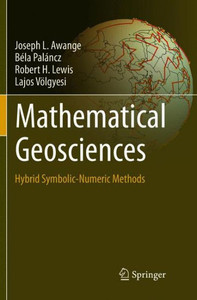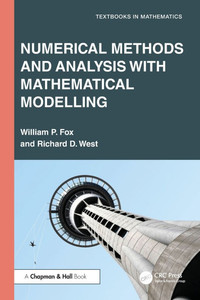
Mathematical Geosciences: Hybrid Symbolic-Numeric Methods
Springer
ISBN13:
9783030924942
$139.06
This book provides updated forms of the algorithms and new examples with high-quality visualizations added in every chapter. In addition, the five new following chapters have been added: (1) Solution Equations with Uncertainty: (i) This chapter proposes two novel methods for computing the solutions of nonlinear geodetic equations as stochastic variables when the parameters of these equations have uncertainty characterized by probability distribution. The first method is based on an algebraic technique employing partly symbolic computations and can be employed for polynomial systems even with different uncertainty distributions of the parameters. The second method is a numerical one using stochastic differential equation in Ito form. (2) Nature Inspired Global Optimization: Meta-heuristic algorithms are based on natural phenomenon such as Particle Swarm Optimization, which simulates schools of fish or flocks of birds, the Firefly Algorithm, Artificial Bee or Ant Colony, etc. Other aspects discussed include the Harmony Search, Black Hole Algorithm, Immunized Evolutionary Programming, Cuckoo Search, Levy flights, and random walks. (3) Employing Gröbner Basis Theory: Gröbner bases are an important theoretical building block in modern (polynomial) ring theory. In this chapter, four practical applications of Gröbner basis theory are considered. (4) Discrete Optimization in the Geosciences: Solving phase ambiguity in Global Navigation Satellite Systems (GNSSs) is considered as a global quadratic mixed integer programming task, which can be transformed into a pure integer problem with a given digit of accuracy. In this chapter, three alternative algorithms are suggested. Two of them are based on local and global linearization via McCormic Envelopes, respectively. (5) Neural Networks: Neural Networks as a machine learning technique offer an effective tool for data processing (i.e., classification) as well as function approximation methods (i.e., regression). Following a brief introduction, this chapter demonstrates the most effective network algorithms, e.g., Hopfield network for image reconstruction, unsupervised net for fitting sphere to point cloud data, and recurrent network for time series prediction. Deep learning and convolutional neural networks algorithms and their applications are discussed, after which stochastic approximation methods like drop out and assembly learning techniques are demonstrated.
- | Author: Joseph L. Awange, Béla Paláncz, Robert H. Lewis, Lajos Völgyesi
- | Publisher: Springer
- | Publication Date: Apr 08, 2023
- | Number of Pages: 744 pages
- | Language: English
- | Binding: Hardcover
- | ISBN-10: 3030924947
- | ISBN-13: 9783030924942
- Author:
- Joseph L. Awange, Béla Paláncz, Robert H. Lewis, Lajos Völgyesi
- Publisher:
- Springer
- Publication Date:
- Apr 08, 2023
- Number of pages:
- 744 pages
- Language:
- English
- Binding:
- Hardcover
- ISBN-10:
- 3030924947
- ISBN-13:
- 9783030924942





